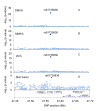A missense variant in FTCD is associated with arsenic metabolism and toxicity phenotypes in Bangladesh
- PMID: 30893314
- PMCID: PMC6443193
- DOI: 10.1371/journal.pgen.1007984
A missense variant in FTCD is associated with arsenic metabolism and toxicity phenotypes in Bangladesh
Erratum in
-
Correction: A missense variant in FTCD is associated with arsenic metabolism and toxicity phenotypes in Bangladesh.PLoS Genet. 2019 May 20;15(5):e1008172. doi: 10.1371/journal.pgen.1008172. eCollection 2019 May. PLoS Genet. 2019. PMID: 31107898 Free PMC article.
Abstract
Inorganic arsenic (iAs) is a carcinogen, and exposure to iAs via food and water is a global public health problem. iAs-contaminated drinking water alone affects >100 million people worldwide, including ~50 million in Bangladesh. Once absorbed into the blood stream, most iAs is converted to mono-methylated (MMA) and then di-methylated (DMA) forms, facilitating excretion in urine. Arsenic metabolism efficiency varies among individuals, in part due to genetic variation near AS3MT (arsenite methyltransferase; 10q24.32). To identify additional arsenic metabolism loci, we measured protein-coding variants across the human exome for 1,660 Bangladeshi individuals participating in the Health Effects of Arsenic Longitudinal Study (HEALS). Among the 19,992 coding variants analyzed exome-wide, the minor allele (A) of rs61735836 (p.Val101Met) in exon 3 of FTCD (formiminotransferase cyclodeaminase) was associated with increased urinary iAs% (P = 8x10-13), increased MMA% (P = 2x10-16) and decreased DMA% (P = 6x10-23). Among 2,401 individuals with arsenic-induced skin lesions (an indicator of arsenic toxicity and cancer risk) and 2,472 controls, carrying the low-efficiency A allele (frequency = 7%) was associated with increased skin lesion risk (odds ratio = 1.35; P = 1x10-5). rs61735836 is in weak linkage disequilibrium with all nearby variants. The high-efficiency/major allele (G/Valine) is human-specific and eliminates a start codon at the first 5´-proximal Kozak sequence in FTCD, suggesting selection against an alternative translation start site. FTCD is critical for catabolism of histidine, a process that generates one-carbon units that can enter the one-carbon/folate cycle, which provides methyl groups for arsenic metabolism. In our study population, FTCD and AS3MT SNPs together explain ~10% of the variation in DMA% and support a causal effect of arsenic metabolism efficiency on arsenic toxicity (i.e., skin lesions). In summary, this work identifies a coding variant in FTCD associated with arsenic metabolism efficiency, providing new evidence supporting the established link between one-carbon/folate metabolism and arsenic toxicity.
Conflict of interest statement
The authors have declared that no competing interests exist.
Figures





References
-
- Ravenscroft P, Brammer H, Richards KS (2009) Arsenic pollution: a global synthesis. Chichester, U.K.; Malden, MA: Wiley-Blackwell. xxvii, 588 p. p.
Publication types
MeSH terms
Substances
Grants and funding
LinkOut - more resources
Full Text Sources
Medical
Molecular Biology Databases

